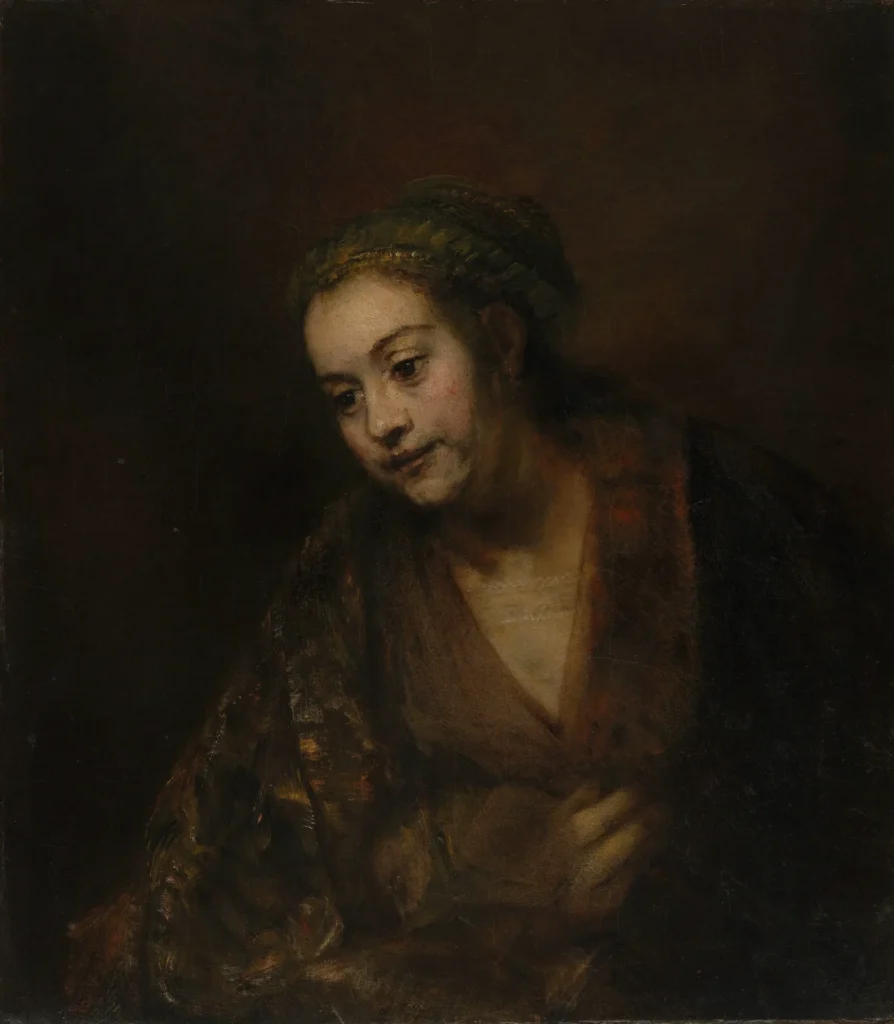Portrait of Hendrickje Stoffels
Completed around the mid-1650s, the Portrait of Hendrickje Stoffels showcases Rembrandt's remarkable ability to convey intimacy through art. The portrait depicts Hendrickje, who was not only Rembrandt's housekeeper but also his partner. Adorned in luxurious attire, including pearl earrings and a fur mantle, her pose reveals a sensuality reflective of their close bond. This period in Rembrandt's life was fraught with challenges, making this work a potent symbol of love amidst adversity.
Mid-1650s
About the Artwork
Did You Know
Liked what you see? Add it to your collection.
Enjoyed reading? Share it.
... continued
Subject and Identity
The portrait is widely believed to depict Hendrickje Stoffels, who was Rembrandt's housekeeper and later his live-in companion. Although Rembrandt did not explicitly identify the subject, the informality and affection in the portrait suggest it is Hendrickje.
Period and Context
The portrait was likely painted in the mid-1650s, around the same time Hendrickje gave birth to their daughter, Cornelia, in 1654. This period was marked by significant personal and financial challenges for Rembrandt, including public condemnation of Hendrickje for "living in sin" due to her pregnancy outside of marriage.
Artistic Characteristics
The portrait is characterized by its intimacy and sensuality. Hendrickje is depicted wearing expensive pearl earrings, a gold chain, and a luxurious white fur mantle. Her dress appears unfastened, revealing more of her breast than would have been acceptable in a formal portrait of the time. This suggests a deep personal connection between the artist and the subject.
Financial and Personal Motivations
Rembrandt did not marry Hendrickje because doing so would have resulted in the loss of the income from his first wife Saskia's dowry, which was held in trust for their son Titus. Despite this, Hendrickje managed Rembrandt's business affairs and lived with him until her death in 1663.
Art Historical Significance
The portrait is part of a series of works that Rembrandt created during his relationship with Hendrickje, which include other portraits and nudes that are also believed to depict her. These works are notable for their tender intimacy and the revolutionary techniques Rembrandt used to capture human emotions.
Public Reception and Historical Context
Hendrickje faced public humiliation and was banned from receiving communion due to her unwedded cohabitation with Rembrandt. Despite these challenges, the portrait suggests a deep affection and respect between Rembrandt and Hendrickje, reflecting the complexities of their relationship.










